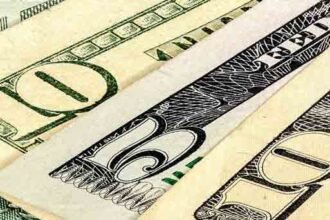Sterling experienced a substantial 1% jump against the dollar on Thursday, powered by external tariff-related developments, while concurrently weakening against the euro. This turbulence in the currency markets follows the sudden postponement of some U.S. tariffs, influencing asset sentiment globally.
The currency dynamics on Thursday continued to be influenced by President Donald Trump’s decision to temporarily reduce tariffs, initially sparking optimism for U.S. assets. However, by late Thursday in Europe, enthusiasm waned, resulting in a 1% increase of the pound against the dollar to $1.296, marking the most significant one-day rise for the sterling in over a month.
Despite this, the euro emerged as the primary beneficiary among major world currencies, gaining on the pound while other currencies like the yen and Swiss franc remained stable. Analysts suggest this shift is due to European investors shedding their U.S. equity and bond holdings. Meanwhile, all eyes are on forthcoming UK economic data, expected to show slight recovery signs, although trade uncertainties linger.
(With inputs from agencies.)



















